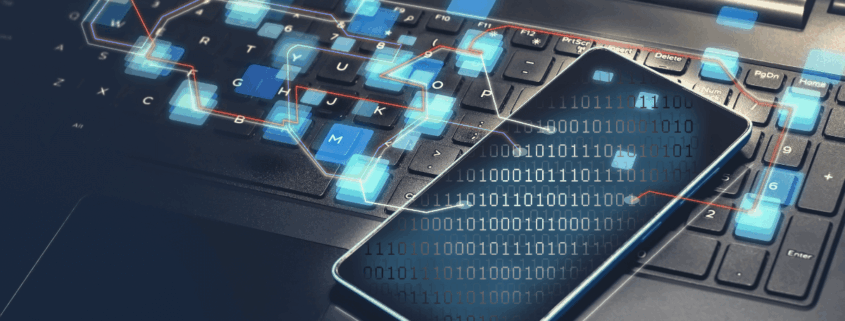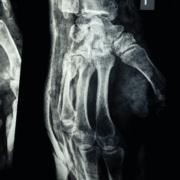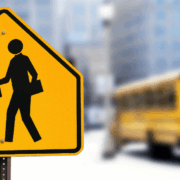The Digital Evidence Toolkit: Smartphone Data That Can Make or Break Your West Virginia Accident Case
A car accident happens in an instant, but the story of how it occurred begins long before the impact. In the immediate aftermath, the focus is rightly on physical injuries and the visible chaos of the scene. However, in today’s connected world, a vital, invisible layer of evidence exists that can provide a precise, second-by-second account of the events leading to a collision. This evidence resides in a device most of us carry every day: the smartphone.
What Kinds of Smartphone Data Are Relevant in an Accident Investigation?
A modern smartphone is a repository of personal data, capturing details about our movements, communications, and activities. While much of this information is private, certain data points can become incredibly important evidence when a serious accident occurs. This information helps paint a complete picture for insurance companies, attorneys, and, if necessary, a jury.
Key types of smartphone evidence include:
- GPS and Location Data: Most smartphones have GPS capabilities that track the device’s location with remarkable accuracy. This data can pinpoint a vehicle’s location, speed, and travel path right before a crash.
- Call Logs and Text Messages: Records of incoming and outgoing calls and text messages, complete with timestamps, can establish whether a driver was distracted in the moments leading up to an accident.
- Emails and App Data: Similar to text messages, data from email clients and other messaging apps (like WhatsApp or Facebook Messenger) can prove a driver was engaged in distracting behavior.
- Photos and Videos: The phone’s camera roll may contain timestamped photos or videos taken by the driver or a passenger just before or immediately after the accident, capturing road conditions, vehicle positions, or even the actions of those involved.
- Social Media Activity: Posts, check-ins, or status updates on platforms like Facebook, Instagram, or X (formerly Twitter) can provide a timeline of a person’s activities and state of mind, sometimes even contradicting their official statements about the accident.
- Web Browser History: A phone’s internet search history might show that a driver was looking up directions or browsing a website, indicating a significant cognitive distraction.
- Voice and App Recordings: Some applications or phone features may record audio, which could capture conversations or sounds from inside the vehicle that are relevant to the crash.
This collection of digital footprints provides a powerful toolkit for accident reconstruction. It allows legal and technical professionals to piece together a sequence of events grounded in objective data rather than relying solely on human memory, which can be flawed and subjective.
How Can GPS and Location History Establish Fault?
One of the most compelling forms of digital evidence is the Global Positioning System (GPS) data logged by a smartphone. This information, often collected by mapping applications like Google Maps, Waze, or Apple Maps, and even by the phone’s operating system itself, can be instrumental in proving another driver’s negligence.
Here’s how location data can be used:
- Verifying Speed: GPS data often includes speed information. This can definitively prove if a driver was exceeding the speed limit or traveling too fast for the road or weather conditions in West Virginia. For example, if a driver claims they were going 55 mph but their phone’s location history shows a speed of 70 mph just seconds before the collision, this becomes a critical piece of evidence.
- Pinpointing the Exact Location: In disputes over the point of impact, such as in a sideswipe or lane-change accident, GPS data can confirm the precise location of each vehicle at the moment of the crash. This can resolve “he said, she said” arguments about who was in the proper lane.
- Tracing the Path of Travel: The historical route data can show a driver’s path leading up to the accident scene. This can reveal erratic driving behaviors, such as sudden swerving or an unusually abrupt stop, that may have contributed to the crash.
- Contradicting Driver Testimony: A driver might claim they were on a certain road for a legitimate reason when, in fact, their GPS history shows they took an illogical or prohibited route. This can undermine the driver’s credibility and suggest their actions were not as straightforward as they claim.
Obtaining this data requires a formal legal process, but its value in demonstrating key facts of a case—speed, location, and direction of travel—cannot be overstated. It provides a scientific basis for an accident reconstruction expert’s opinions and gives jurors objective facts to consider.
Proving Distracted Driving: The Role of Call Logs, Texts, and App Usage
Distracted driving is a pervasive and dangerous issue on West Virginia roads. While many people associate it with texting, it encompasses any activity that diverts attention from the primary task of driving. Proving a driver was distracted can be challenging, as it often relies on witness observation or the at-fault driver’s admission. However, smartphone data provides undeniable proof of such negligence.
- Text Message and Call Timestamps: The most direct evidence of distraction is a timestamp on a text message or phone call that coincides with the exact time of the accident. If a driver sent or received a text at 10:30 a.m. and the 911 call for the accident was placed at 10:31 a.m., it creates a powerful inference of distraction-related negligence.
- Data Usage Logs: Beyond calls and texts, mobile carriers maintain logs of data usage. These logs can show that a social media app, streaming service, or web browser was actively using data at the time of the crash. This is compelling evidence that the driver’s attention was on their screen, not the road.
- Application Activity: Forensic analysis of a smartphone can sometimes reveal which applications were open and active on the screen when the collision occurred. Evidence of a driver engaging with an app like Instagram, TikTok, or a mobile game is strong proof of cognitive and visual distraction.
Under West Virginia law, using a handheld electronic communication device for texting or talking on the phone while driving is illegal. Presenting evidence that a driver violated this law not only establishes their negligence but can also be used to argue for a finding of negligence per se—meaning the act itself is considered negligent because it violated a statute designed to protect public safety.
The Legal Process for Obtaining Smartphone Evidence
You cannot simply ask for the other driver’s phone to look for evidence. Accessing this private information requires navigating a formal legal process designed to balance the need for evidence with individual privacy rights. The process generally unfolds during the discovery phase of a lawsuit.
- Request for Production: Your attorney will serve the opposing party with a formal “Request for Production of Documents and Electronically Stored Information (ESI).” This request will specifically ask for cell phone bills, data usage statements, and potentially a forensic image of the smartphone itself.
- Subpoena Duces Tecum: To obtain records directly from a third party, like a mobile provider (e.g., AT&T, Verizon), your attorney will issue a subpoena. This legal document compels the company to produce the requested records, such as call logs, text message details (timestamps and numbers, not content), and data usage history for a specific period.
- Motion to Compel: If the opposing party refuses to produce the requested data or objects to the subpoena, your attorney may file a “Motion to Compel” with the court. A judge will then hear arguments from both sides and decide whether the request is reasonable and the information is relevant to the case.
- Forensic Examination: In cases where a deep analysis is needed, the court may order a neutral, third-party forensic expert to create a “forensic image” of the phone. This is an exact copy of the device’s data, including deleted files and fragments that are not visible to the average user. The expert can then analyze this image for relevant evidence pertaining to the accident.
This process requires a detailed understanding of legal procedure and the rules of evidence. An attorney experienced in handling digital evidence knows how to draft these requests with the necessary specificity to overcome objections and get the information needed to build a strong case.
How Social Media Can Impact Your Personal Injury Claim
Social media is a double-edged sword in personal injury cases. Just as the at-fault driver’s posts can be used against them, your own social media activity will be scrutinized by the defense. Insurance companies and their lawyers will meticulously search your public profiles on Facebook, Instagram, and other platforms, looking for any information that could be used to devalue or deny your claim.
Here are some ways your social media can be used against you:
- Contradicting Injury Claims: You might claim you suffered a severe back injury that prevents you from engaging in physical activity. However, if you post photos of yourself hiking, playing with your kids at the park, or dancing at a wedding, the defense will use these images to argue that you are exaggerating or faking your injuries.
- Providing an Alternative Timeline: A simple “check-in” at a location or a post made around the time of the accident could be used to challenge your account of events.
- Revealing Prior Medical Conditions: Old posts discussing a previous injury or health issue may be used to argue that your current pain is from a pre-existing condition, not the accident.
- Admissions Against Interest: A seemingly innocent post like, “This day has been terrible, I was so tired I wasn’t paying attention on the road,” could be interpreted as an admission of partial fault for the accident.
Because of this, it is highly advisable to refrain from posting anything on social media while your personal injury case is pending. It is also wise to ask friends and family not to post pictures of you or tag you in their posts. Anything you put online can and will be found and potentially used to undermine your case.
Beyond Memories: Proving Your Accident Case with Digital Evidence
The data from a smartphone, when properly collected and analyzed, transforms an accident case. It moves the argument from a subjective debate over memories to an objective discussion of facts. The attorneys at Powell & Majestro, P.L.L.C., are committed to leveraging every available tool to advocate for our clients. We understand the significance of this data and know how to use the legal system to obtain and effectively present it. If you have been injured in an accident, the story of what happened may be waiting on a small device.
Contact us for a free, no-obligation consultation to discuss your case and learn how we can help. Call us at (304) 346-2889 or reach out to us through our online contact form to learn more about your legal options.








Leave a Reply
Want to join the discussion?Feel free to contribute!